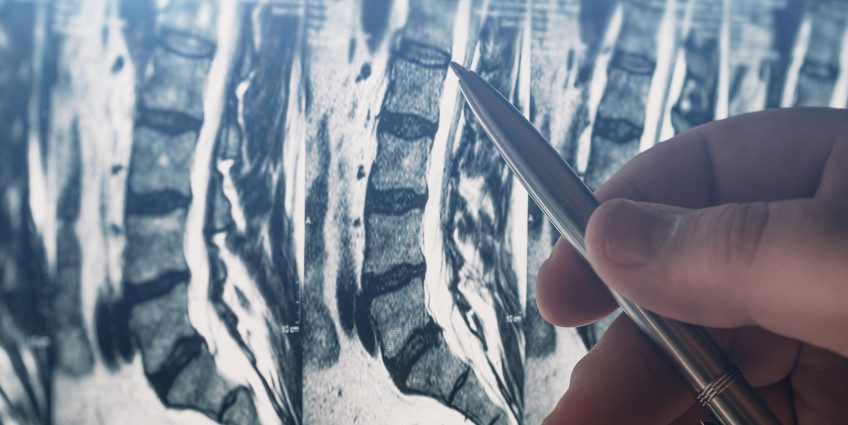In the realm of modern therapeutic interventions for back pain, spinal decompression therapy stands out as a beacon of innovation and hope. This non-invasive treatment, increasingly sought after for its efficacy in alleviating chronic back pain, represents a significant advancement in the way we approach spinal health. In this comprehensive exploration, we delve into the science behind spinal decompression therapy, unraveling how this cutting-edge technique is revolutionizing the treatment of back pain and related spinal conditions.
Understanding the Spine and Back Pain
The Anatomy of the Spine:
The human spine is a complex and intricate structure, central to our body’s mobility and function. Comprising a series of vertebrae stacked upon one another, it is cushioned by intervertebral discs that act as shock absorbers. These discs prevent the vertebrae from grinding against each other while allowing flexibility and movement. The spine also houses and protects the spinal cord, a crucial part of the central nervous system that transmits signals between the brain and the body.
Common Causes of Back Pain:
Back pain can stem from various issues affecting the spine’s structure and function. Among the most common are herniated discs, where the disc’s inner gel-like substance protrudes and exerts pressure on the surrounding nerves, leading to pain and discomfort. Sciatica, characterized by pain radiating along the sciatic nerve from the lower back down the legs, is often a result of such herniation. Degenerative disc disease, another prevalent cause, involves the discs losing their cushioning ability, leading to pain and stiffness.
Traditional Treatments for Back Pain:
Traditionally, back pain has been treated through a range of methods, from physical therapy and medication to more invasive surgical procedures. While these treatments can be effective, they often come with limitations and risks. Medications, for instance, can lead to dependency and side effects, while surgery carries inherent risks and requires significant recovery time. This has led to a growing interest in alternative, non-invasive treatments that can provide relief without these drawbacks.
The Evolution of Spinal Decompression Therapy
Historical Background and Development:
The roots of spinal decompression therapy can be traced back to the concept of spinal traction, a practice that has been part of medical treatment for centuries. Traditional traction involved stretching the spine to relieve back pain, but it lacked the precision and control offered by modern methods. The evolution of spinal decompression therapy began in earnest with the advent of more sophisticated technology in the late 20th century. This period saw the development of motorized traction devices that allowed for more precise control over the stretching process, laying the foundation for what we now know as spinal decompression therapy.
Transition from Traditional Traction to Modern Techniques:
The key difference between traditional traction and modern spinal decompression is the level of control and specificity. Traditional traction applied a uniform force along the spine, which often provided temporary relief but was not effective in targeting specific problem areas. Modern spinal decompression therapy, however, uses computerized systems to apply a controlled force to the spine at precise angles. This targeted approach allows for the treatment of specific spinal issues, such as herniated discs, with greater efficacy.
Technological Advancements in Spinal Decompression:
The technology behind spinal decompression therapy has continued to evolve. Today’s decompression tables are equipped with advanced computer systems that can tailor the force and angle of decompression to the individual patient’s needs. These systems can monitor the body’s response to treatment in real time, adjusting the parameters accordingly to ensure maximum effectiveness and patient comfort.
Principles of Spinal Decompression
How Spinal Decompression Works:
Spinal decompression therapy operates on the principle of creating negative pressure within the affected intervertebral disc. During a decompression session, the spine is gently stretched, creating a vacuum effect within the disc. This negative pressure encourages the bulging or herniated disc material to retract, reducing pressure on the surrounding nerve tissues. This retraction of the disc material also promotes the influx of nutrients, oxygen, and hydration into the disc, facilitating healing and repair.
Negative Pressure and Its Effects on the Spine:
The creation of negative pressure is the cornerstone of spinal decompression therapy. By reversing the pressure within the disc, decompression therapy not only alleviates pain but also contributes to the healing process of the damaged disc. This approach is particularly effective in treating conditions like herniated discs, where the retraction of the disc material can lead to significant pain relief and improved mobility.
Differences Between Spinal Decompression and Traditional Traction:
While both spinal decompression and traditional traction involve stretching the spine, the key difference lies in their approach and precision. Spinal decompression therapy is much more controlled and focused, targeting specific areas of the spine with computerized accuracy. This specificity allows for more effective treatment of particular spinal conditions, making spinal decompression a more advanced and refined form of spinal traction.
The Science of Healing: How Decompression Aids Recovery
Biological Mechanisms Activated During Spinal Decompression:
Spinal decompression therapy goes beyond mere mechanical relief. It activates several biological processes crucial for the healing and regeneration of spinal discs. When negative pressure is created within a disc during decompression, it fosters an environment conducive to healing. This process encourages the diffusion of water, oxygen, and nutrient-rich fluids into the disc, which are essential for cell regeneration and repair. This influx of nutrients revitalizes the disc, promoting healing from within.
Impact on Herniated or Bulging Discs:
For patients with herniated or bulging discs, spinal decompression therapy offers a respite from the constant pressure exerted on spinal nerves. By creating space for the disc material to retract, it alleviates nerve compression, a primary source of pain in such conditions. This retraction not only reduces pain but also sets the stage for the natural healing process, potentially reducing the recurrence of disc herniation.
Enhancing the Body’s Natural Healing Process:
Spinal decompression therapy aligns with the body’s natural healing mechanisms. By restoring the optimal position and condition of spinal discs and relieving nerve compression, it allows the body’s innate healing processes to function more effectively. This natural approach to healing is particularly appealing to those seeking alternatives to more invasive treatments like surgery or long-term medication use.
Spinal Decompression in Action
Description of a Typical Spinal Decompression Session:
A typical session of spinal decompression therapy involves the patient lying on a specialized decompression table. The patient is comfortably secured to the table using harnesses, ensuring stability and safety during the treatment. The chiropractor then sets the decompression parameters on the computerized system, tailored to the patient’s specific condition and needs. As the session begins, the table gently stretches the spine, creating the therapeutic negative pressure in a controlled and gradual manner.
Equipment Used in Spinal Decompression Therapy:
The equipment used in spinal decompression therapy is a testament to the advancement in chiropractic technology. The decompression table is equipped with a computerized system that precisely controls the angle and intensity of the stretch. This system can be adjusted in real-time based on the patient’s response, ensuring a personalized and effective treatment experience.
Customization of Treatment for Individual Patients:
One of the key strengths of spinal decompression therapy is its ability to be customized for each patient. Factors such as the patient’s weight, the specific spinal condition being treated, and the patient’s response to therapy are all taken into account. This level of customization ensures that each patient receives the most effective treatment for their unique situation, maximizing the benefits of the therapy.
Clinical Evidence and Effectiveness
Overview of Research Studies and Clinical Trials:
The efficacy of spinal decompression therapy has been the subject of numerous research studies and clinical trials. These studies have primarily focused on its effectiveness in treating conditions like herniated discs, sciatica, and chronic lower back pain. For instance, a notable study published in the American Journal of Pain Management reported significant improvement in patients with herniated discs and sciatic symptoms following spinal decompression therapy.
Success Rates and Statistical Data Supporting Efficacy:
Statistical analyses from various clinical trials have shown promising results. Many studies report over a 70% success rate in reducing pain and improving the functional abilities of patients undergoing spinal decompression. These success rates are particularly significant when compared to traditional treatments for similar conditions.
Comparative Analysis with Other Back Pain Treatments:
When compared to other back pain treatments, such as surgery or medication, spinal decompression therapy often shows favorable outcomes. It stands out for its non-invasive nature, lower risk of complications, and the absence of a lengthy recovery period. Additionally, it offers a sustainable option for pain management without the dependency risks associated with pain medications.
Who Can Benefit from Spinal Decompression?
Ideal Candidates for Spinal Decompression Therapy:
Spinal decompression therapy is particularly beneficial for individuals suffering from:
- Herniated or bulging discs
- Degenerative disc disease
- Sciatica or radiculopathy
- Chronic lower back or neck pain
- Posterior facet syndrome
Patients who have not found relief from traditional treatments or those seeking a non-surgical approach to managing their spinal conditions are often ideal candidates.
Conditions Most Effectively Treated with Decompression:
The therapy is most effective in treating conditions involving nerve compression due to spinal disc issues. It is especially beneficial for patients with herniated discs, where the decompression can facilitate the retraction of the disc material, significantly reducing nerve irritation and pain.
Limitations and Contraindications:
While spinal decompression therapy is widely beneficial, it is not suitable for everyone. Contraindications include:
- Severe osteoporosis
- Spinal fractures
- Tumors or metastases on the spine
- Advanced spondylosis or spinal fusion
- Pregnancy
Patients with these conditions should consult with their healthcare provider to explore alternative treatments.
Integrating Spinal Decompression into Holistic Care
Complementary Treatments for Enhanced Outcomes:
Spinal decompression therapy is often most effective when integrated into a broader, holistic treatment plan. At Pro Health & Rehab, we combine decompression with other modalities such as chiropractic adjustments, physical therapy, and lifestyle counseling. This integrative approach ensures a comprehensive treatment plan that addresses all aspects of the patient’s health.
The Role of Lifestyle Changes and Rehabilitation:
In addition to spinal decompression, we emphasize the importance of lifestyle changes and rehabilitation exercises in enhancing treatment outcomes. By educating patients on proper ergonomics, exercise routines, and nutrition, we empower them to take an active role in their health journey, which can lead to more sustainable results.
Personalized Treatment Plans for Each Patient:
Recognizing that each patient’s condition and health goals are unique, we at Pro Health & Rehab create personalized treatment plans. These plans are tailored to meet the specific needs of each patient, ensuring that they receive the most appropriate and effective combination of treatments.
Future of Spinal Decompression Therapy
Ongoing Research and Potential Advancements:
The field of spinal decompression therapy is ripe with potential for future advancements. Ongoing research is focused on enhancing the efficacy of the treatment, with studies exploring various aspects such as optimal treatment durations, frequency, and the integration of new technologies. Innovations in computerized decompression systems and biomechanical modeling are expected to further refine the precision and effectiveness of the therapy.
Exploring Broader Applications:
As our understanding of spinal health continues to evolve, so too does the potential application of spinal decompression therapy. Researchers are investigating its effectiveness in treating a broader range of spinal conditions, including those traditionally managed with more invasive procedures. The possibility of using decompression therapy as a preventive measure for certain spinal issues is also a promising area of exploration.
The Evolving Role in Spinal Care:
Spinal decompression therapy is poised to play an increasingly significant role in the overall landscape of spinal care. As awareness of its benefits grows, it is likely to become a more commonly recommended treatment option, not only for chronic back pain but also for maintaining overall spinal health.
Embracing a Pain-Free Future: Your Next Steps with Spinal Decompression
In this article, we have explored the science behind spinal decompression therapy, its evolution from traditional traction methods, the principles of its operation, and its clinical effectiveness. We have also highlighted real-life patient experiences and discussed the integration of this therapy into holistic care plans.
The Importance of Spinal Decompression in Modern Back Pain Treatment:
Spinal decompression therapy represents a significant advancement in the non-invasive treatment of back pain and related spinal conditions. Its ability to alleviate pain, enhance healing, and improve quality of life makes it a valuable component of modern chiropractic care.
Encouragement for Consultation:
If you are experiencing back pain, sciatica, or other related conditions, we encourage you to consider spinal decompression therapy as a potential treatment option. At Pro Health & Rehab in Marietta, GA, our team of experienced professionals is dedicated to providing personalized care that addresses your specific needs.
Contact Pro Health & Rehab for Your Treatment Needs:
To learn more about spinal decompression therapy and how it can benefit you, or to schedule a consultation, please contact Pro Health & Rehab. Our team is ready to assist you on your journey to better health and wellness.
Stay Informed and Engaged:
For more information on spinal health and the latest advancements in chiropractic care, follow Pro Health & Rehab on our social media channels and visit our website. Let us be your partner in achieving a pain-free and healthy lifestyle.



